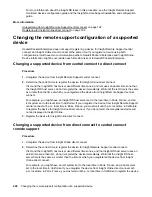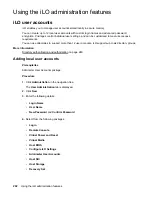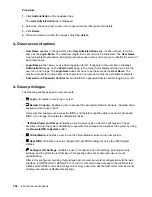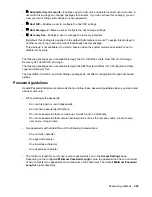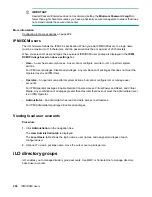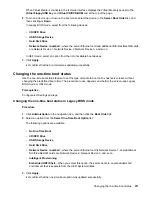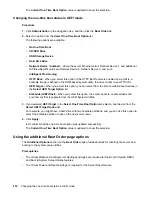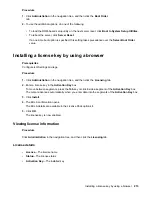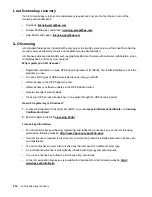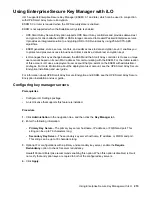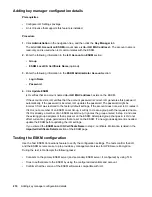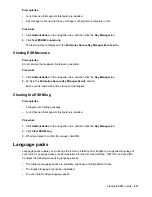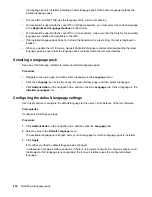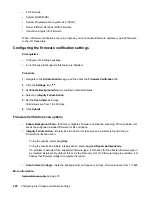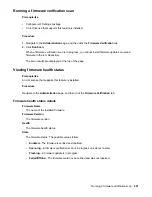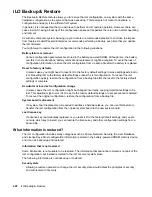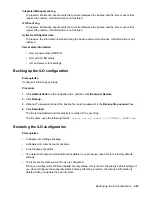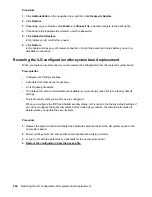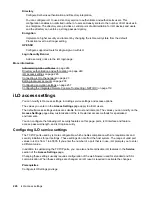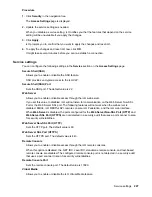
The
Current One-Time Boot Option
value is updated to show the selection.
Changing the one-time boot status in UEFI mode
Procedure
1.
Click
Administration
in the navigation tree, and then click the
Boot Order
tab.
2.
Select an option from the
Select One-Time Boot Option
list.
The following options are available:
•
No One-Time Boot
•
CD/DVD Drive
•
USB Storage Device
•
Hard Disk Drive
•
Network Device <number>
, where the server Ethernet card is Network Device 1, and additional
NIC/FlexibleLOM cards are Network Device 2, Network Device 3, and so on.
•
Intelligent Provisioning
•
HTTP Boot
—When you select this option, if the HTTP Boot feature is enabled and a URI to a
bootable image is defined in the ROM-based system utility, the server boots to an HTTP URI.
•
UEFI Target
—When you select this option, you can select from the list of available boot devices in
the
Select UEFI Target Option
list.
•
Embedded UEFI Shell
—When you select this option, the server boots to an embedded shell
environment that is separate from the UEFI System Utilities.
3.
If you selected
UEFI Target
in the
Select One-Time Boot Option
list, select a boot device from the
Select UEFI Target Option
list.
For example, you might have a hard drive with two bootable partitions, and you can use this option to
select the bootable partition to use on the next server reset.
4.
Click
Apply
.
iLO confirms that the one-time boot option was updated successfully.
The
Current One-Time Boot Option
value is updated to show the selection.
Using the additional Boot Order page options
The
Additional Options
section on the
Boot Order
page provides buttons for resetting the server and
booting to the system setup utilities.
Prerequisites
• The Virtual Media and Configure iLO Settings privileges are required for the Boot to System RBSU
and Boot to System Setup Utilities features.
• The Virtual Power and Reset privilege is required for the Server Reset feature.
212
Changing the one-time boot status in UEFI mode



